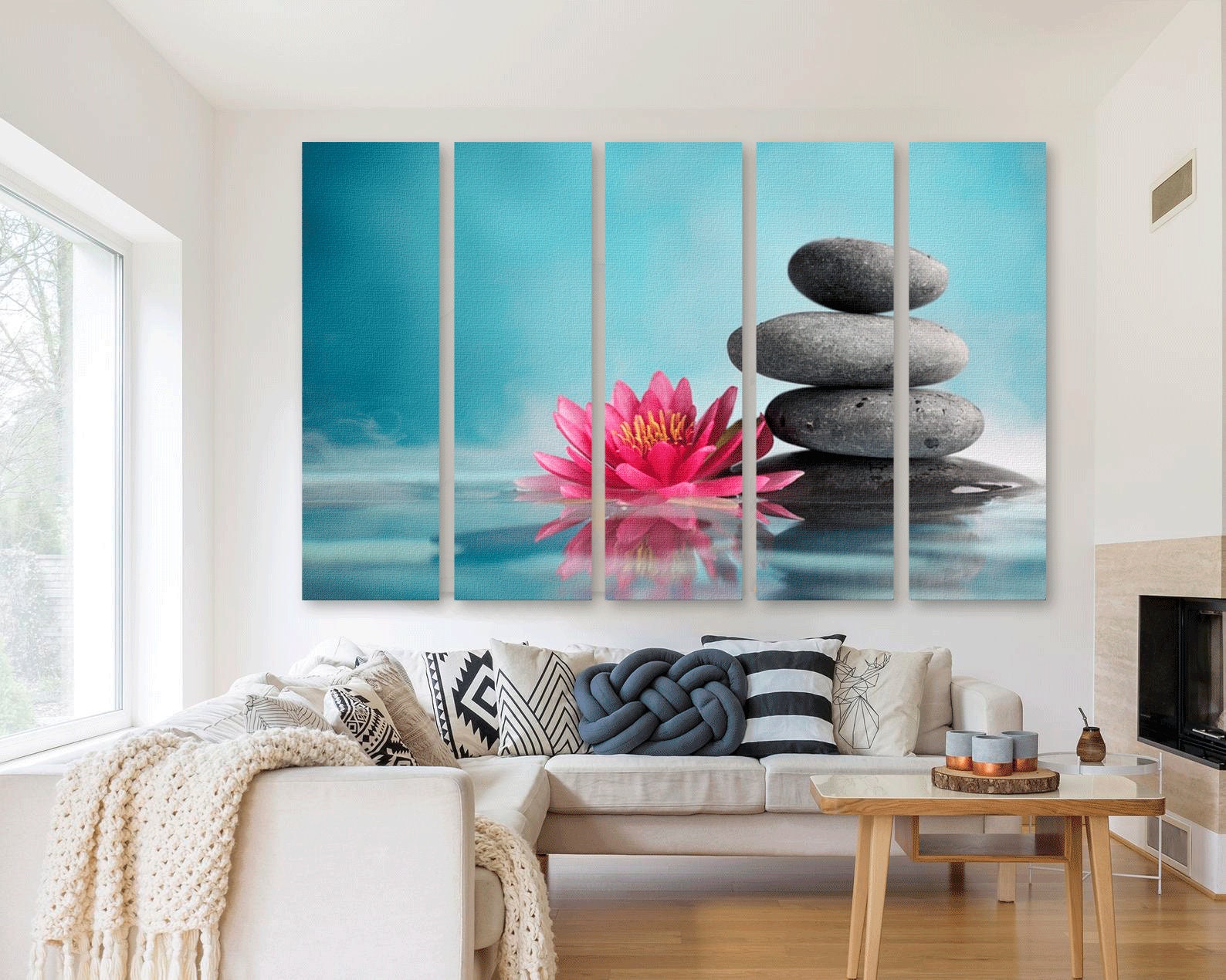Zen Wall Art



Design and Aesthetics
Zen wall art embodies the principles of simplicity, natural beauty, and tranquility. It often features natural materials like wood, stone, and bamboo, as well as minimalist forms and subtle textures. The goal is to create a sense of calm and harmony in the space.
The serenity of zen wall art adds a touch of tranquility to any room. Its minimalist aesthetic complements the clean lines and sophisticated materials found in high end interior design. Whether placed in a living room, bedroom, or office, zen wall art evokes a sense of calm and balance, creating a space that is both visually appealing and conducive to relaxation.
Japanese Sumi-e Paintings
Japanese sumi-e paintings are characterized by their use of black ink and brushstrokes to create simple, yet evocative images. These paintings often depict natural scenes, such as mountains, trees, and flowers, and are known for their ability to capture the essence of the subject.
The minimalist allure of zen wall art finds a harmonious echo in the refined elegance of Edwardian house interiors. With their muted tones, delicate moldings, and an emphasis on natural light, these spaces provide a tranquil backdrop for the serene simplicity of zen art, creating an ambiance that invites contemplation and inner peace.
Chinese Calligraphy
Chinese calligraphy is another popular form of Zen wall art. It involves writing Chinese characters with a brush and ink, and is often used to create abstract or decorative pieces. The characters themselves can be simple or complex, and the way they are written can convey a variety of emotions and meanings.
Zen Wall Art



Zen Wall Art: Meaning and Symbolism
Zen wall art is not merely decorative; it carries profound philosophical and spiritual significance. Its minimalist aesthetic and symbolic imagery reflect the core principles of Zen Buddhism, emphasizing peace, harmony, and mindfulness.
Use of Symbols and Imagery
Zen wall art often employs simple yet powerful symbols to convey its messages. The circle, for instance, represents the cycle of life and the interconnectedness of all things. The lotus flower symbolizes purity and spiritual awakening, while the bamboo signifies resilience and adaptability. These symbols, when combined, create a visual language that speaks to the soul.
Examples of Zen Wall Art
- A circular painting with a single brushstroke of calligraphy, representing the circle of life.
- A painting of a lotus flower in full bloom, symbolizing purity and spiritual enlightenment.
- A sculpture of a bamboo stalk, conveying resilience and adaptability in the face of adversity.
Zen Wall Art



Zen Wall Art: Practical Applications
Incorporating Zen wall art into your home or business environment can bring a sense of tranquility and well-being. Here are some practical applications for different types of Zen wall art:
Types of Zen Wall Art
| Type | Description | Suitable Spaces |
|---|---|---|
| Paintings | Serene landscapes, abstract brushstrokes, or calligraphic symbols | Meditation rooms, living rooms, offices |
| Sculptures | Minimalist forms, natural materials like wood or stone | Meditation rooms, entryways, gardens |
| Wall Hangings | Textile or paper prints with Zen motifs, such as mandalas or bamboo | Living rooms, bedrooms, offices |
Suitability of Zen Wall Art for Different Spaces
- Meditation Rooms: Create a calming atmosphere for meditation practice with Zen paintings or sculptures.
- Living Rooms: Bring a sense of serenity to the living space with Zen wall hangings or paintings depicting natural scenes.
- Offices: Enhance concentration and reduce stress with minimalist Zen sculptures or abstract paintings.
Tips for Incorporating Zen Wall Art
- Choose Calming Colors: Opt for neutral hues like white, beige, or gray to create a soothing backdrop.
- Consider the Scale: Ensure the size of the artwork complements the space and doesn’t overwhelm it.
- Create Focal Points: Place a single large piece of art as a focal point or arrange smaller pieces in a harmonious composition.
- Allow for Negative Space: Leave ample blank space around the artwork to enhance its impact and create a sense of spaciousness.
- Use Natural Materials: Incorporate elements like wood, stone, or bamboo into the artwork or surrounding decor to create a natural and grounding atmosphere.